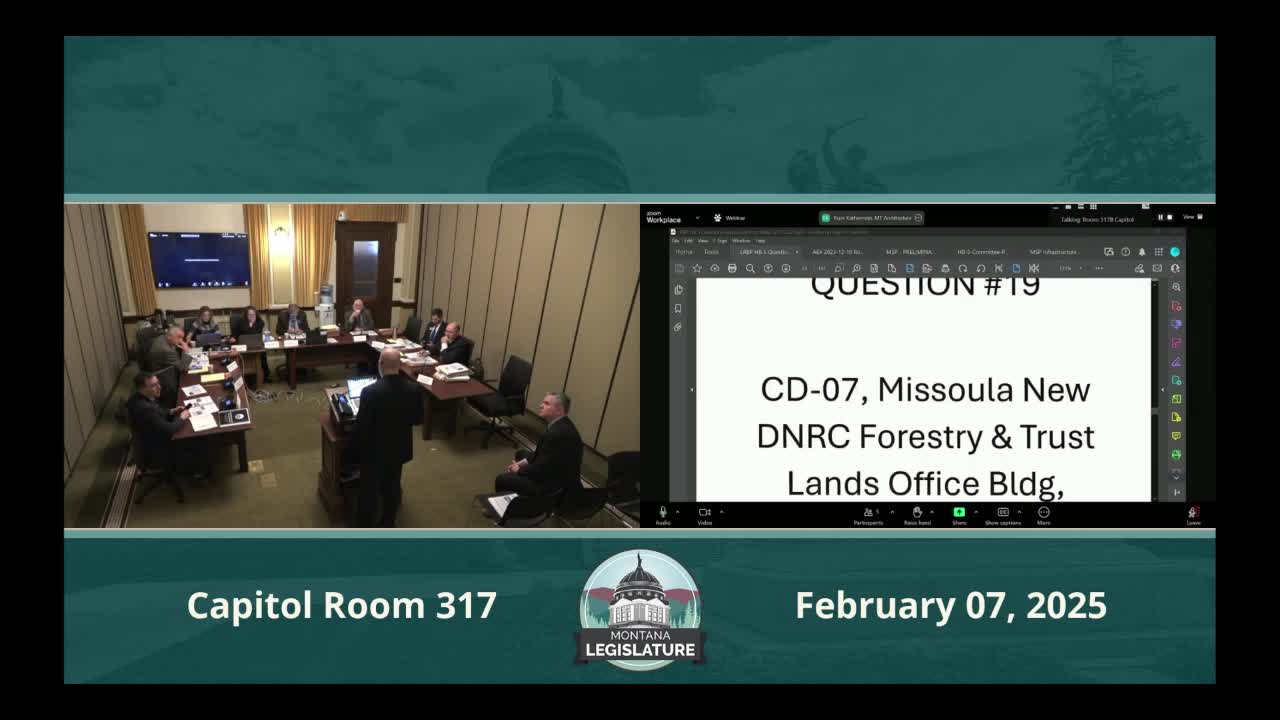Lawmakers question costs for firefighter bunkhouses, urge modular and shared designs
February 07, 2025 | 2025 Legislature MT, Montana
This article was created by AI summarizing key points discussed. AI makes mistakes, so for full details and context, please refer to the video of the full meeting. Please report any errors so we can fix them. Report an error »

The subcommittee discussed capital requests for seasonal bunkhouses intended to house wildland and incident personnel near staging areas. Architecture and agency witnesses said initial bids for simple dormitory buildings and site work repeatedly exceeded the agencies’ construction budgets.
Why it matters: Firefighting housing is intended to support recruitment and on‑site capacity during fire season, but legislators asked whether high per‑unit construction costs are justified for structures used part‑time and whether modular or standardized designs would be more cost‑effective.
A&E staff showed past bids for similar bunkhouses ranging from about $1.3 million to $1.7 million against a construction budget the division set at $900,000 for a simple 7‑ to 14‑bed design. Lawmakers and witnesses discussed additional site costs such as septic, roads and parking. Representative Hinton and Representative Vinton pressed for alternatives; Senator Resser and others suggested standardizing two sizes (16 and 32 beds) and using modular vendors to reduce per‑unit design and procurement costs. Agency staff said they would pursue modular options and reconvene with the committee.
Committee members also discussed whether existing correctional or enterprise construction programs could provide manufacturing capacity and whether bunkhouses should be designed to be movable between sites. Witnesses said some locations use bunkhouses nine months a year but many are seasonal; agencies will return with cost‑reduction options.
What’s next: A&E and the departments agreed to analyze standardized modular options, return with cost comparisons, and study centralized kitchen/shared infrastructure models to reduce per‑site expense.
Why it matters: Firefighting housing is intended to support recruitment and on‑site capacity during fire season, but legislators asked whether high per‑unit construction costs are justified for structures used part‑time and whether modular or standardized designs would be more cost‑effective.
A&E staff showed past bids for similar bunkhouses ranging from about $1.3 million to $1.7 million against a construction budget the division set at $900,000 for a simple 7‑ to 14‑bed design. Lawmakers and witnesses discussed additional site costs such as septic, roads and parking. Representative Hinton and Representative Vinton pressed for alternatives; Senator Resser and others suggested standardizing two sizes (16 and 32 beds) and using modular vendors to reduce per‑unit design and procurement costs. Agency staff said they would pursue modular options and reconvene with the committee.
Committee members also discussed whether existing correctional or enterprise construction programs could provide manufacturing capacity and whether bunkhouses should be designed to be movable between sites. Witnesses said some locations use bunkhouses nine months a year but many are seasonal; agencies will return with cost‑reduction options.
What’s next: A&E and the departments agreed to analyze standardized modular options, return with cost comparisons, and study centralized kitchen/shared infrastructure models to reduce per‑site expense.
View full meeting
This article is based on a recent meeting—watch the full video and explore the complete transcript for deeper insights into the discussion.
View full meeting
